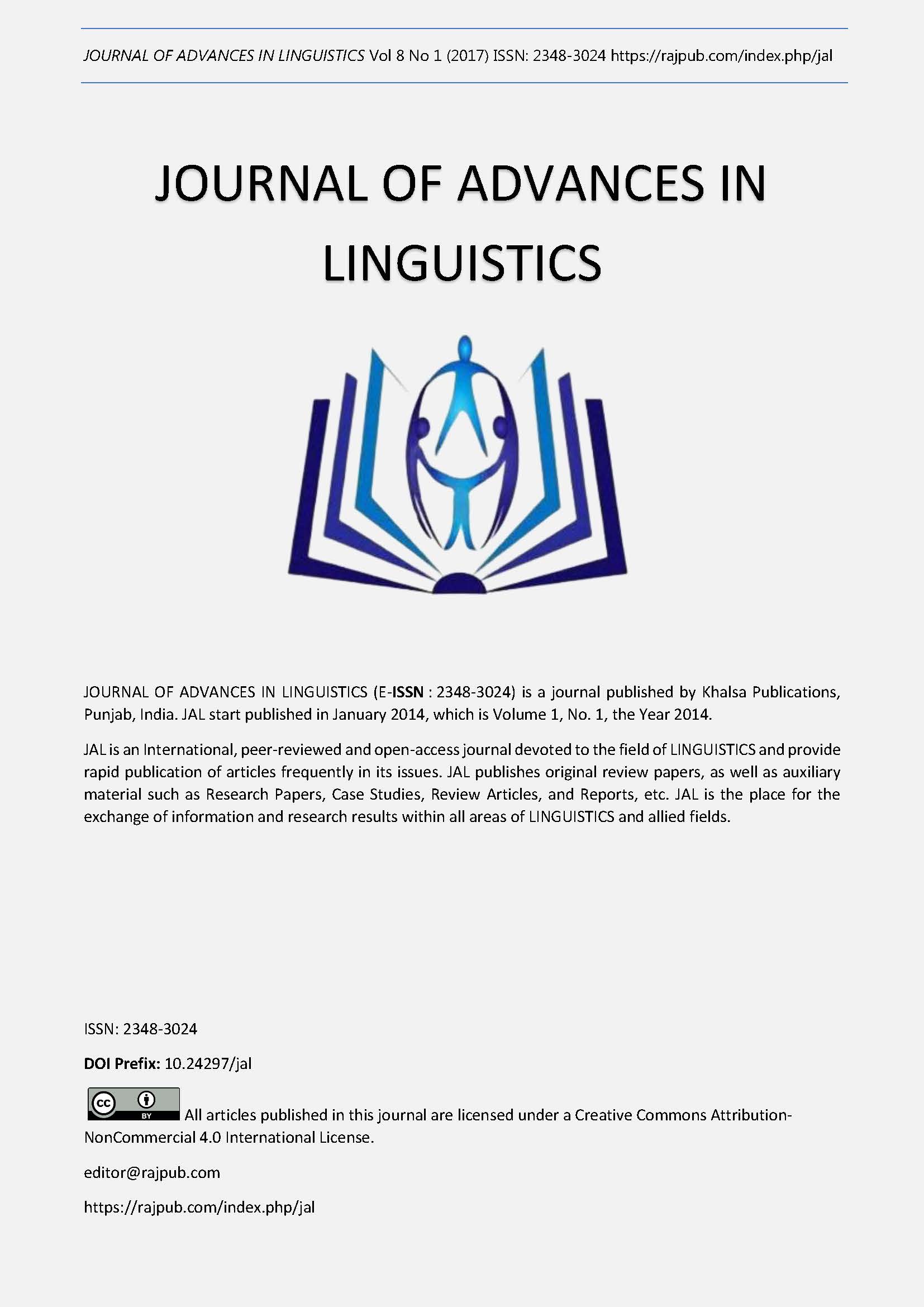Conceptualization of Persian Relative Structure in Cognitive Grammar
DOI:
https://doi.org/10.24297/jal.v8i1.6406Keywords:
Key words: Cognitive Linguistics, Cognitive Grammar, Relativization, Relative clause, Restrictive, Non-restrictiveAbstract
Abstract
In the cognitive approach to linguistics, language is considered as a part of the cognitive system which mirrors the conceptual organization as well as the world within the speakers' mind. According to this view, the outside world experience is reflected in the language structure and language forms. This modern approach includes a variety of principles, perspectives, assumptions and models, among which the Cognitive Grammar Model is recognized as the most noticeable one. This grammar considers a symbolic nature for a language which symbolizes the meaning and thought. On the other hand, relativization as a notion in every individual's mind and cognition is considered as a universal manifested in all languages. Thus, the present research tries to clarify the conceptualization and symbolization of Persian relative structure from the cognitive point of view and by the use of cognitive means. It, also studies different types of relative structures in Persian, on the basis of Langacker (2008) model and differentiates the restrictive and non-restrictive relative clauses in Persian. The methodology used in the analysis of this research is the descriptive-analytical methodology. For the data collection, the corpus methodology is used and examples of Persian relative structures are studied. The present research findings show that Persian conceptualization of the relative structures can be clarified in the cognitive approach and Persian relative structures can be studied on the basis of Langacker model.
Downloads
Downloads
Published
How to Cite
Issue
Section
License
 All articles published in Journal of Advances in Linguistics are licensed under a Creative Commons Attribution 4.0 International License.
All articles published in Journal of Advances in Linguistics are licensed under a Creative Commons Attribution 4.0 International License.




